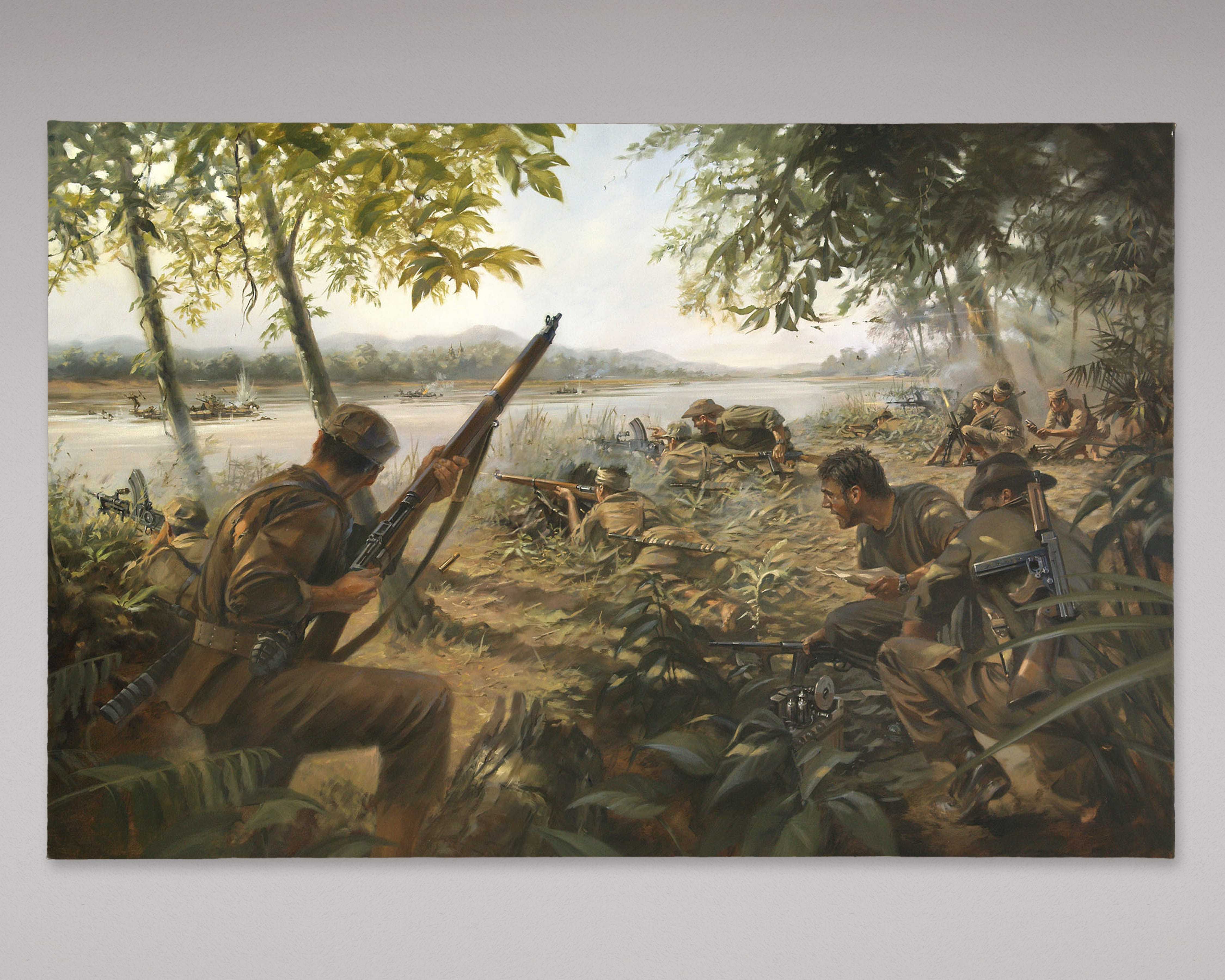Art Details

Detachment 101 engaged in guerrilla actions, sabotage, and psychological measures to gather intelligence.
Stuart Brown
2010
Oil on Canvas
Donated Courtesy of Michael DeSombre
During World War II, the Burma Road in northeast Burma was a lifeline for the Nationalist Chinese fighting the Japanese. A primary reason for the Japanese invasion of Burma, which was a British colony at the time, was to cut this supply link. The Imperial Army accomplished this task by the summer of 1942. The Allies then began airlifting materiel from India to China over the Himalayas, nicknamed “the Hump” by American fliers, all the while trying to reopen the road.
In April 1942, Coordinator of Information and future Office of Strategic Services (OSS) Director William J. Donovan activated Detachment 101 to create an indigenous guerrilla force charged with gathering intelligence, harassing the Japanese occupiers, identifying bombing targets for the Army Air Force, and rescuing downed Allied airmen, all deep behind enemy lines in Burma. Detachment 101 pioneered the art of unconventional warfare, foreshadowing the missions of today’s US Army Special Forces.
Never more than a few hundred Americans strong, Detachment 101 relied on support from various Burmese tribal groups, most notably the staunchly anti-Japanese Kachins. Combined with the efforts of the British Wingate’s Raiders, Merrill’s Marauders of the US Army, and Nationalist Chinese troops, Detachment 101 was so successful that Japan had to divert significant numbers of troops to Burma to protect the new railroad that it had built to move supplies overland after US Navy submarines had blocked Japanese shipping routes.
The painting depicts one of Detachment 101’s many guerrilla operations staged to disrupt Japanese supply and reinforcement routes in Burma. Staked out on one side of the Irrawaddy River, OSS-trained Kachin rangers ambush Japanese rafts bringing troops and supplies to the Japanese-held town of Myitkyina in July 1944. Such actions helped lead to the Allied re-capture of the town and, ultimately, the defeat of Japanese forces in northern Burma.
By the time of its deactivation in July 1945, OSS Detachment 101 had amassed an impressive list of accomplishments, performing against overwhelming enemy strength and under the most difficult and hazardous conditions. The courage and fighting spirit of the Kachin guerrillas and their American advisors earned Detachment 101 a Presidential Unit Citation and recognition as the “most effective tactical combat force” in the OSS.
Video
placeholder
